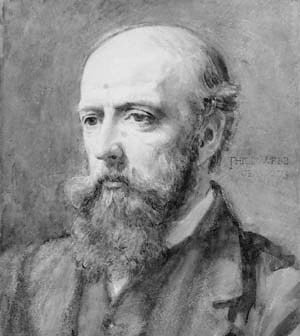
PHILIP WEBB
Philip Webb (1831-1915), British architect, studied at the Oxford school of Art, later apprenticed to an architectural firm in Reading.
He collaborates with designer and entrepreneur William Morris, whom he met at John Ruskin’s school of architecture. Webb becomes the principal architect of Morris’s firm, “Morris, Marshall, Faulkner & Co.” founded in 1861.
Webb is considered one of the pioneers of the Arts and Crafts movement in architecture. His style is characterized by a return to traditional craftsmanship and the use of natural materials such as wood and stone. His works incorporate details drawn from medieval English architecture or vernacular language, with a distinct focus on the handcrafted qualities of workmanship. For these and other reasons he is considered one of the most influential architects of his generation.
Among the many works that might be recalled is the famous Red House in Bexleyheath, designed in 1859 for William Morris and his family.
Webb spent his last years in the country, dying in Sussex at the age of eighty-four.

